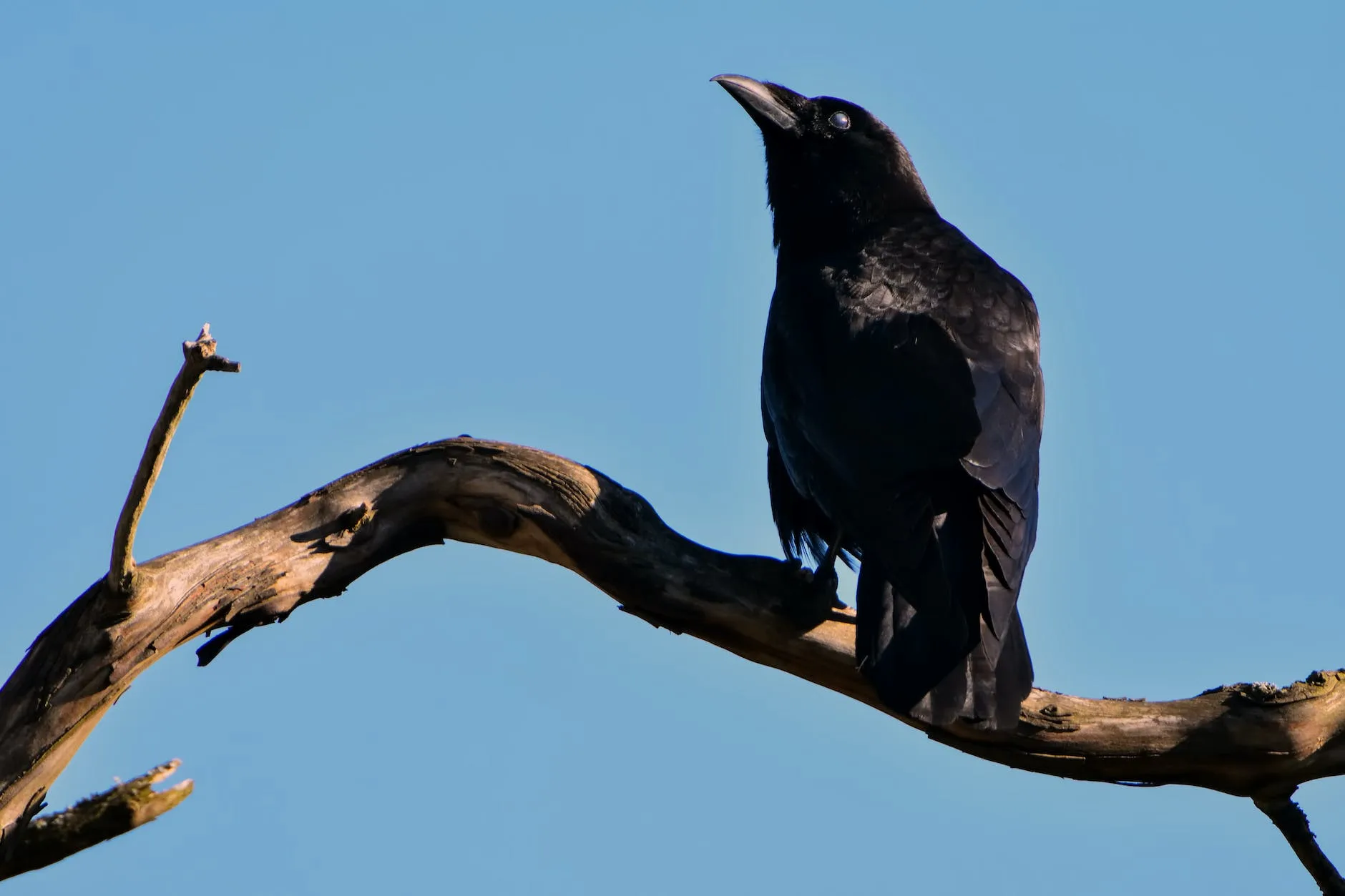The American Crow: A Fascinating Bird of Intelligence and Adaptability
December 28, 2023 | by BlackCrow.com

The American crow, scientifically known as Corvus brachyrhynchos, is a remarkable bird that can be found across North America. With its distinctive black feathers and intelligent nature, the American crow has captured the curiosity and admiration of bird enthusiasts and researchers alike.
Physical Characteristics
The American crow is a medium-sized bird, measuring about 17 to 21 inches in length, with a wingspan of around 33 to 39 inches. It has glossy black feathers, a stout body, and a strong, curved bill. One distinguishing feature of the American crow is its large, dark eyes that exude intelligence.
These birds are highly adaptable and can thrive in a variety of habitats, including forests, fields, urban areas, and even coastal regions. They are known for their distinctive cawing sound, which is often used for communication and territorial defense.
Intelligence and Problem-Solving Skills
The American crow is renowned for its intelligence and problem-solving abilities. Research has shown that these birds possess a remarkable level of cognitive skills, including tool use and the ability to recognize human faces.
One famous experiment conducted by Dr. Alex Taylor at the University of Auckland demonstrated the American crow’s ability to solve complex puzzles. The crows were presented with a series of tasks that required them to use tools to retrieve food rewards. The birds quickly learned how to use sticks and other objects to access the food, showcasing their problem-solving skills.
Furthermore, American crows have been observed using cars to crack open nuts. They would place the nuts on the road and wait for vehicles to run over them, effectively breaking the hard shells. This innovative behavior demonstrates their ability to adapt and utilize resources in their environment.
Social Behavior and Communication
American crows are highly social birds and can often be seen in large flocks. They form strong family bonds and engage in cooperative breeding, where multiple individuals help raise the young. These birds also exhibit complex communication skills, using a wide range of vocalizations to convey messages to their flock members.
Their distinct cawing calls serve various purposes, including warning others of potential threats, establishing territory boundaries, and coordinating group activities. American crows can also mimic the calls of other bird species, further showcasing their vocal abilities.
Diet and Feeding Habits
American crows are omnivorous birds with a diverse diet. They feed on a wide range of food sources, including insects, small mammals, fruits, seeds, carrion, and even human food scraps. Their adaptability allows them to take advantage of various food resources, making them successful survivors in different environments.
These birds are known for their scavenging behavior, often congregating around roadkill or garbage dumps. However, they are also skilled hunters and will actively search for prey, such as mice and other small animals.
Conservation Status
The American crow is not currently listed as a threatened species. In fact, their population has been steadily increasing over the years. This can be attributed to their adaptability, intelligence, and ability to thrive in human-altered environments.
However, like many bird species, American crows face threats such as habitat loss, pesticide use, and collisions with vehicles. It is important to continue monitoring their populations and implementing conservation measures to ensure their long-term survival.
In Conclusion
The American crow, with its intelligence, adaptability, and social behavior, is a fascinating bird that has captured the attention of researchers and bird enthusiasts alike. Its ability to solve complex problems, use tools, and communicate with its flock members showcases the remarkable cognitive abilities of this species.
By understanding and appreciating the American crow, we can gain valuable insights into the intelligence and adaptability of birds and the importance of preserving their habitats for future generations.
RELATED POSTS
View all


